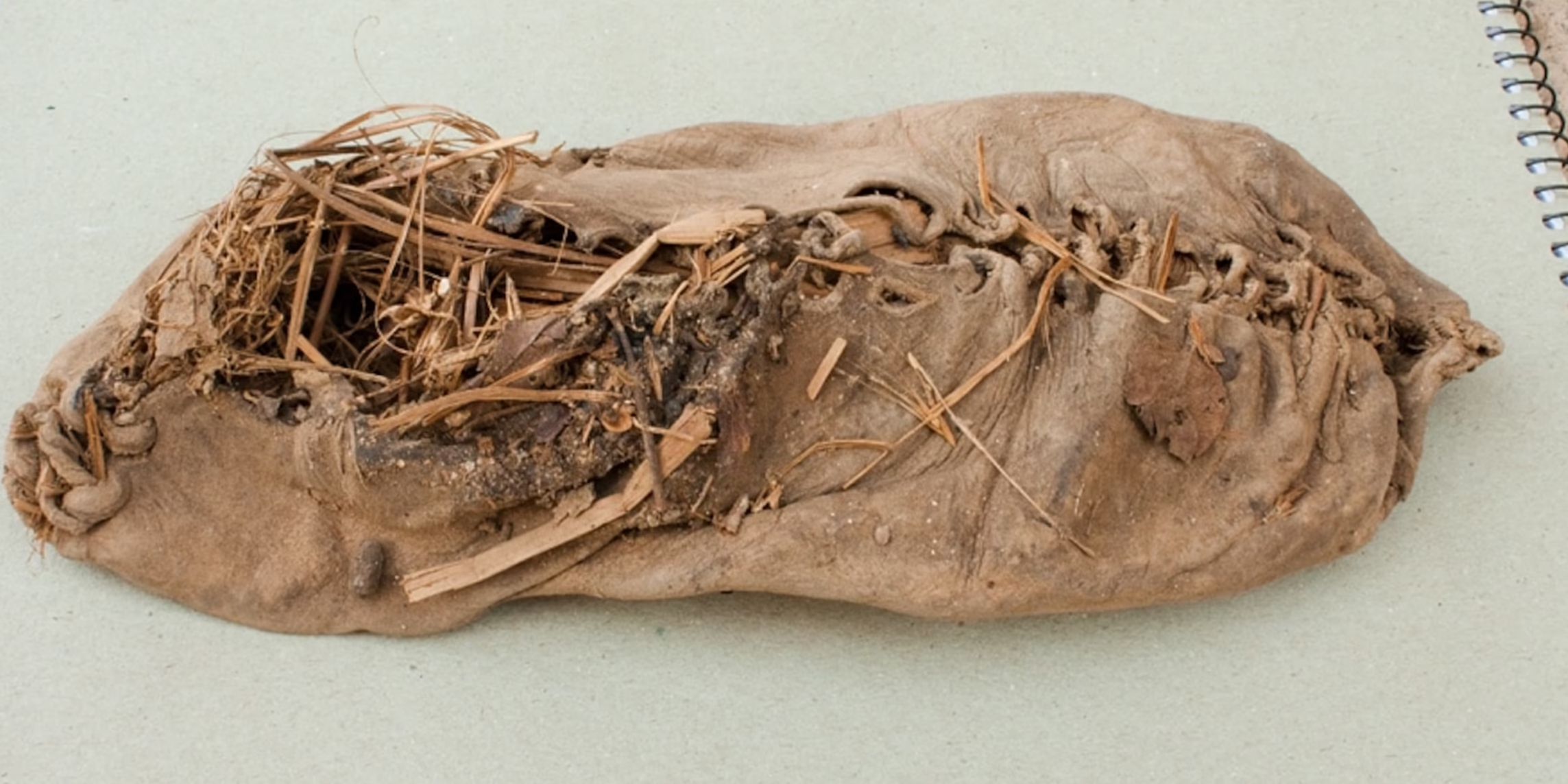Shoes have been integral to human life for millennia, evolving from rudimentary foot coverings to advanced, stylish footwear. But who invented shoes, and why were they created? The history of shoes reveals fascinating insights into human innovation, cultural significance, and the need for protection and comfort.
Who Invented Shoes?
The invention of shoes cannot be attributed to a single individual or culture. Instead, footwear emerged independently in various parts of the world as humans adapted to their environments. The earliest known evidence of shoes dates back to approximately 10,000 years ago. These primitive designs were crafted from materials like animal hides, plant fibers, and bark to shield the feet from rough terrains, extreme weather, and potential injuries.
One of the oldest preserved shoes is the Areni-1 shoe, discovered in an Armenian cave and dating to around 3500 BCE. This leather shoe, complete with laces and padding, showcases early craftsmanship and a clear understanding of functionality and comfort.
Why Were Shoes Created?
Shoes were invented primarily for practical reasons:
- Protection: Early humans needed to shield their feet from sharp objects, rocky surfaces, and extreme temperatures.
- Comfort: Walking long distances required cushioning and support to reduce strain and fatigue.
- Adaptation: Different terrains and climates necessitated specific footwear, such as sandals for hot climates and fur-lined boots for cold regions.
- Cultural and Social Significance: Over time, shoes became symbols of status, identity, and cultural heritage. Ornate designs and unique styles often denoted rank or affiliation.
The Evolution of Footwear
Ancient Footwear
- Prehistoric Era: Early shoes were simple foot coverings made from available natural resources.
- Egypt: Sandals made of papyrus and palm leaves were common, especially among the elite.
- Greece and Rome: Footwear such as caligae (military boots) and soleae (sandals) reflected practicality and status. The Greeks even distinguished between left and right shoes, an innovation later adopted globally.
The Middle Ages
- Footwear in medieval times became a marker of social class. Nobles wore elaborate designs, such as pointed shoes known as poulaines, while peasants opted for durable leather shoes.
- Cobblers emerged as specialized craftsmen, creating tailored footwear for individuals.
The Renaissance
- The Renaissance saw shoes transform into works of art. Materials like silk, velvet, and leather were adorned with jewels and embroidery.
- High heels, initially worn by men for horseback riding, gained popularity across genders and became a fashion statement.
Industrial Revolution
- The 19th century brought mass production of shoes, making them affordable and widely available.
- Innovations like vulcanized rubber revolutionized footwear, leading to the creation of modern sneakers.
- Specialized shoes, such as boots for soldiers and athletic footwear, began to emerge.
Modern Era
- The 20th and 21st centuries saw the rise of high-fashion brands and sportswear giants like Nike, Adidas, and Puma.
- Sneakers transitioned from athletic gear to cultural icons, with designs like the Air Jordan becoming globally recognized.
- Sustainability and technology now shape the future of footwear, with eco-friendly materials and smart shoes leading the way.
15 FAQs About the History of Shoes
- Who invented shoes?
- Shoes were invented by early humans independently in various regions to protect their feet.
- When were shoes first created?
- The earliest evidence of shoes dates back over 10,000 years.
- What is the oldest shoe ever found?
- The Areni-1 shoe from around 3500 BCE is the oldest preserved shoe.
- Why were shoes invented?
- Shoes were created for protection, comfort, and adaptation to different terrains and climates.
- What materials were ancient shoes made of?
- Animal hides, plant fibers, bark, papyrus, and leather.
- What was the purpose of high heels in history?
- High heels were initially designed for men to provide stability during horseback riding.
- How did the Industrial Revolution change footwear?
- It enabled mass production, making shoes more affordable and standardized.
- Why were pointed shoes popular in medieval Europe?
- Pointed shoes symbolized wealth and status among the aristocracy.
- What are pattens?
- Pattens were overshoes made of wood or metal to protect shoes from mud.
- When did sneakers become mainstream?
- Sneakers gained popularity in the early 20th century, with brands like Converse leading the way.
- What are smart shoes?
- Smart shoes are equipped with sensors to monitor physical activity and health metrics.
- What role did cobblers play in history?
- Cobblers were skilled craftsmen who made and repaired shoes by hand.
- What were ancient Egyptian sandals made from?
- Sandals were made from papyrus and palm leaves.
- How has sustainability influenced modern footwear?
- Modern brands use recycled materials and develop biodegradable shoes to reduce environmental impact.
- What does the future hold for shoes?
- The future of shoes includes smart technology, 3D printing, and eco-friendly innovations.
Conclusion: Shoes are more than just functional items; they are cultural symbols and technological marvels. From their ancient origins to modern advancements, the history of shoes reflects humanity’s creativity and adaptability. As footwear continues to evolve, it remains a fascinating window into our past and a glimpse into the future.




Valuable info. Fortunate me I discovered your web site unintentionally, and I am shocked why this coincidence did not came about earlier! I bookmarked it.
Thanks for another informative web site. Where else could I get that kind of info written in such a perfect way? I’ve a project that I am just now working on, and I’ve been on the look out for such information.
It’s in point of fact a great and useful piece of info.I am glad that you just shared this useful info with us.Please keep us informed like this. Thanks for sharing.
I’m extremely impressed with your writing skills as well as with the layout on your weblog. Is this a paid theme or did you customize it yourself? Anyway keep up the excellent quality writing,it is rare to see a nice blog like this one today.
Good write-up. I certainly appreciate this website. Keep it up!
Hi there to every one, since I am really eager of reading this blog’s post to be updated on a regular basis. It includes fastidious data.
Hello to all, the contents existing at this web page are genuinely remarkable for people knowledge, well, keep up the good work fellows.
Hurrah! In the end I got a weblog from where I know how to truly take helpful information regarding my study and knowledge.
I am actually pleased to read this blog posts which contains lots of useful facts, thanks for providing these kinds of information.
Superb post however , I was wanting to know if you could write a litte more on this subject? I’d be very grateful if you could elaborate a little bit further.
Ahaa, its pleasant dialogue on the topic of this piece of writing here at this web site, I have read all that,so at this time me also commenting at this place.
Sweet blog! I found it while searching on Yahoo News. Do you have any tips on how to get listed in Yahoo News?I’ve been trying for a while but I never seem to get there! Many thanks
Very nice post. I just stumbled upon your weblog and wished to say that I’ve truly enjoyed surfing around your blog posts. After all I will be subscribing to your feed and I hope you write again very soon!
I’m not sure where you’re getting your info, but great topic. I needs to spend some time learning more or understanding more. Thanks for great info I was looking for this information for my mission.
Greetings! Very helpful advice in this particular article! It’s the little changes that will make the most significant changes. Thanks a lot for sharing!
Touche. Outstanding arguments. Keep up the great work.
Touche. Outstanding arguments. Keep up the great work.
Ahaa, its pleasant dialogue on the topic of this piece of writing here at this web site, I have read all that,so at this time me also commenting at this place.
Hi, Neat post. There is a problem with your site in web explorer, might test this? IE still is the market chief and a large component of other people will leave out your wonderful writing because of this problem.
It’s amazing to pay a quick visit this web page and reading the views of all colleagues concerning this article, while I am also keen of getting familiarity.
Hey I know this is off topic but I was wondering if you knew of any widgetsI could add to my blog that automatically tweet my newest twitter updates.
Greetings! Very helpful advice in this particular article! It’s the little changes that will make the most significant changes. Thanks a lot for sharing!
You actually make it seem so easy with your presentation but I find this matter to be actually something that I think I would never understand. It seems too complex and very broad for me.I’m looking forward for your next post, I will try to get the hang of it!
Woah! I’m really enjoying the template/theme of this blog. It’s simple, yet effective. A lot of times it’s very difficult to get that “perfect balance” between usability and appearance. I must say that you’ve done a very good job with this. Also, the blog loads extremely quick for me on Chrome. Exceptional Blog!
Howdy just wanted to give you a quick heads up. The words in your article seem to be running off the screen in Ie.
You should be a part of a contest for one of the finest blogs on the net. I’m going to highly recommend this blog!
Good day! Would you mind if I share your blog with my zynga group?There’s a lot of folks that I think would really enjoy your content. Please let me know. Cheers
Ahaa, its pleasant dialogue on the topic of this piece of writing here at this web site, I have read all that,so at this time me also commenting at this place.
Ahaa, its fastidious discussion on the topic of this article at this place at this website, I have read all that, so now me also commenting at this place.